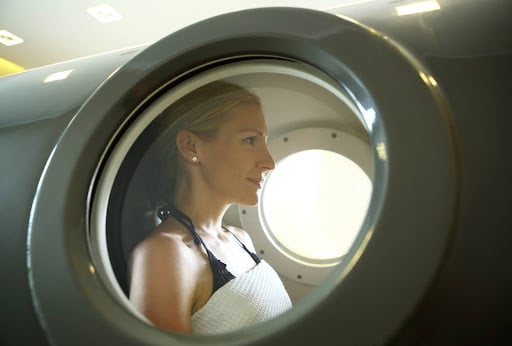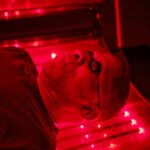If you’ve suffered a concussion or a more serious brain injury from playing football or hockey, you know that recovery can be slow and uncertain. Brain tissue needs oxygen, inflammation needs to be controlled, and the damage can involve both immediate injury and longer‐term effects. That’s where hyperbaric oxygen therapy (HBOT) comes in as a promising option.
What is HBOT?
Hyperbaric oxygen therapy is the practice of breathing pure oxygen in a chamber under increased atmospheric pressure. The idea is simple: the higher pressure allows more oxygen to dissolve in your blood plasma, which delivers extra oxygen to injured brain tissue, helps reduce swelling, promotes the growth of new blood vessels (angiogenesis) and supports repair processes.
What Does the Research Say?
Several PubMed‐indexed studies show HBOT having positive results for brain injury and concussion recovery. The case for the hyperbaric chamber for healing is supported by:
- A randomized, placebo‐controlled clinical trial found that HBOT induced neuroplasticity and improved cognition in people with traumatic brain injury and similar conditions.
- Another study examined mild traumatic brain injury/concussion and persistent symptoms and found that there is growing evidence that HBOT may help with post‐concussion syndrome, improving cognitive, mood, and physical symptoms.
HBOT has been shown to help in many brain injury-related cases, especially when part of a comprehensive rehabilitation plan.
How Castle Rock Regenerative Healthcare Can Help
At Castle Rock Regenerative Healthcare, HBOT is overseen by Dr. Claude Fortin, who is certified in Neurology, Regenerative Medicine, Lifestyle Medicine, and Hyperbaric Oxygen Therapy.
Here’s what they offer and how the process generally works:
- Treatments are in a medical‐grade hard‐sided chamber that accommodates two people (if desired) with reclining chairs, AC, lighting, and an intercom. Comfort matters.
- You’ll breathe pure oxygen through a nasal cannula or face mask. As the chamber pressurizes, you might feel ear pressure, like when descending in a plane or diving. Swallowing or yawning helps equalize.
- Sessions may last roughly 30 to 90 minutes, depending on your condition, history, and what’s prescribed.
- The number of treatments and the pressure used are set by the ordering physician (in this case, Dr. Fortin or Dr. Scott ™.)
- These depend on what is being treated, how severe your injury might be, how recent the brain injury occurred, and what symptoms remain.
Is HBOT Right for You?
If you’re considering HBOT for a concussion or brain injury:
- Talk with a neurologist like Dr. Fortin, who has experience in hyperbaric medicine.
- Look at your symptom history: how long since the injury? What symptoms persist?
- Review risks: HBOT is generally safe, but ear discomfort, pressure issues, and possible oxygen toxicity are things to monitor.
Exploring Your Options
Hyperbaric oxygen therapy is a scientifically supported tool that may help your brain heal more fully after injury. At Castle Rock Regenerative Healthcare, the therapy is delivered thoughtfully, customized to your injury, your symptoms, and your recovery goals.
If you’re dealing with lingering concussion symptoms, like brain fog, headaches, and mood issues, it may be worth scheduling a consultation to see if HBOT is a part of your recovery plan.
Sources:
Pubmed: A double-blind placebo-controlled clinical trial testing the effect of hyperbaric oxygen therapy on brain and cognitive outcomes of mildly cognitively impaired elderly with type 2 diabetes: Study design
Pubmed: Hyperbaric oxygen effect on MMP-9 after a vascular insult
Pubmed: Effectiveness of hyperbaric chamber ventilation




